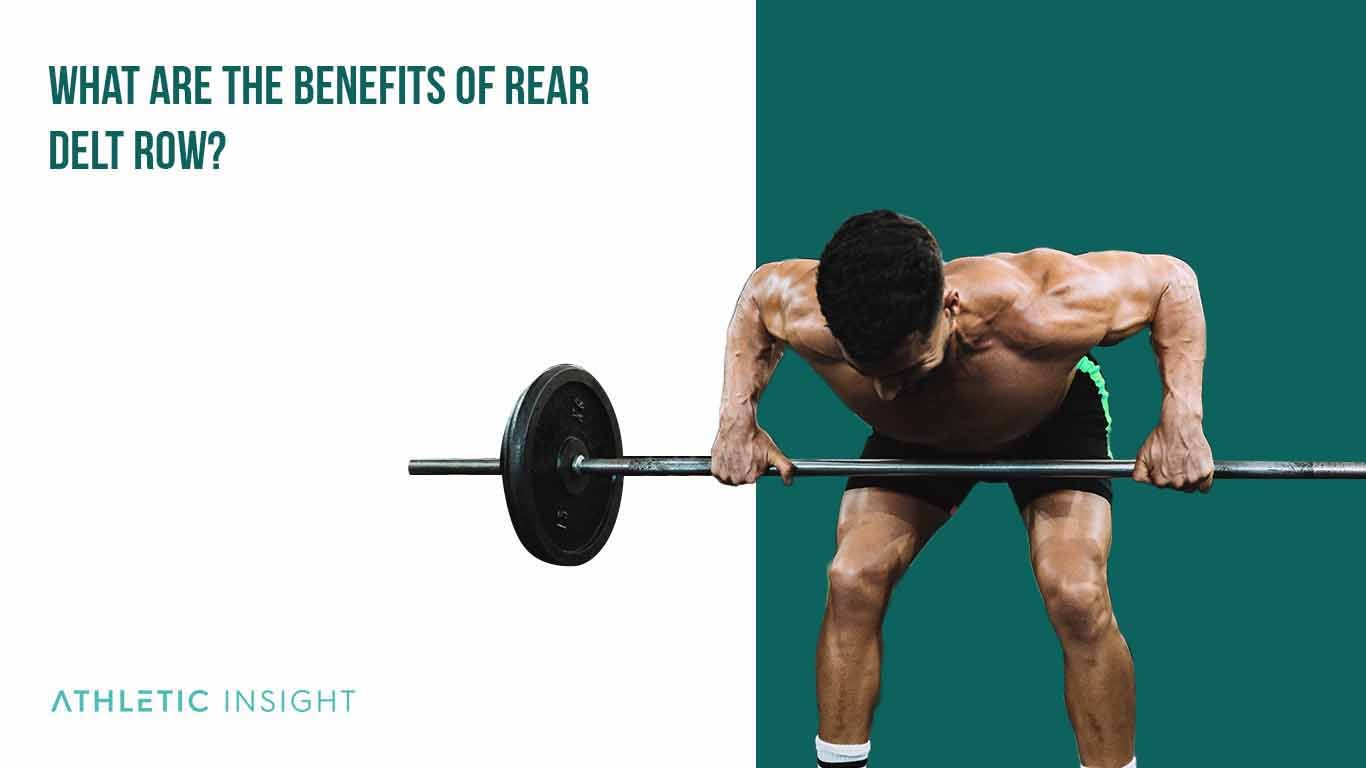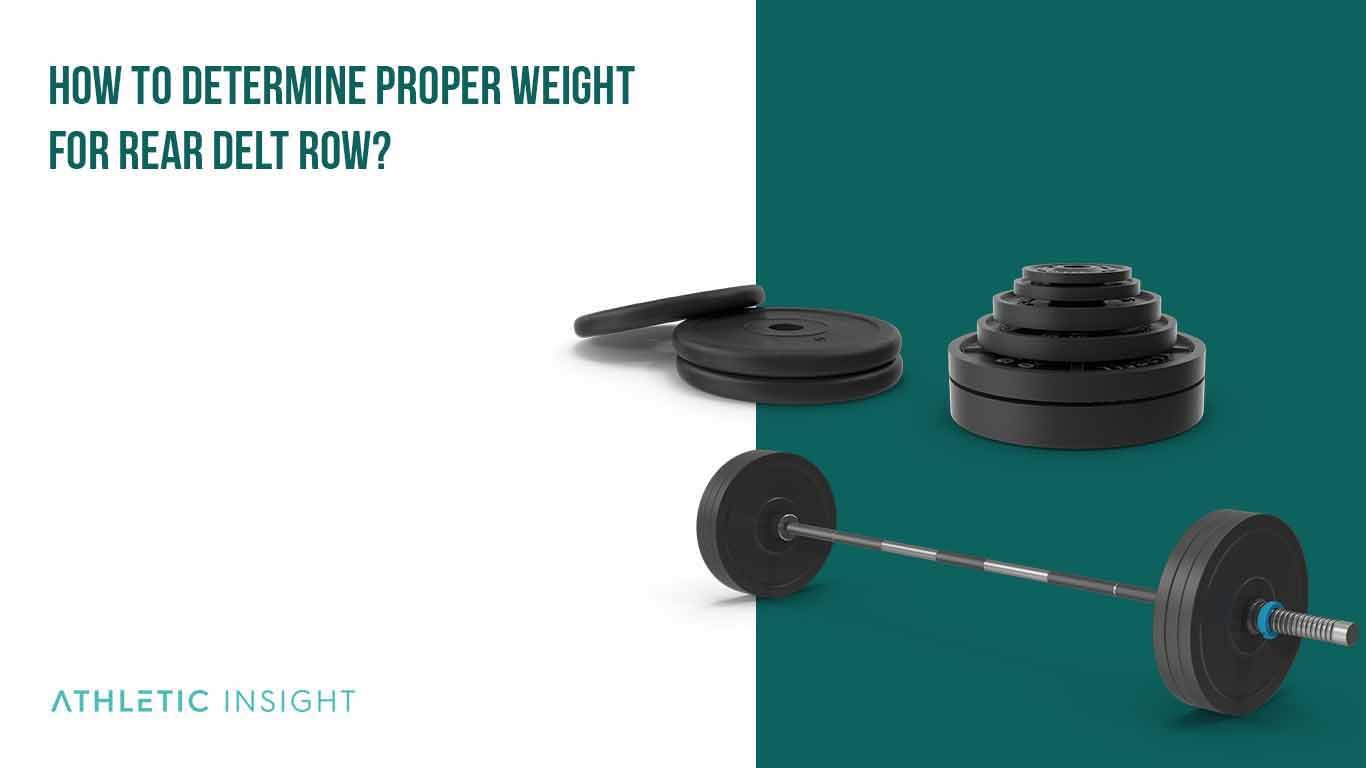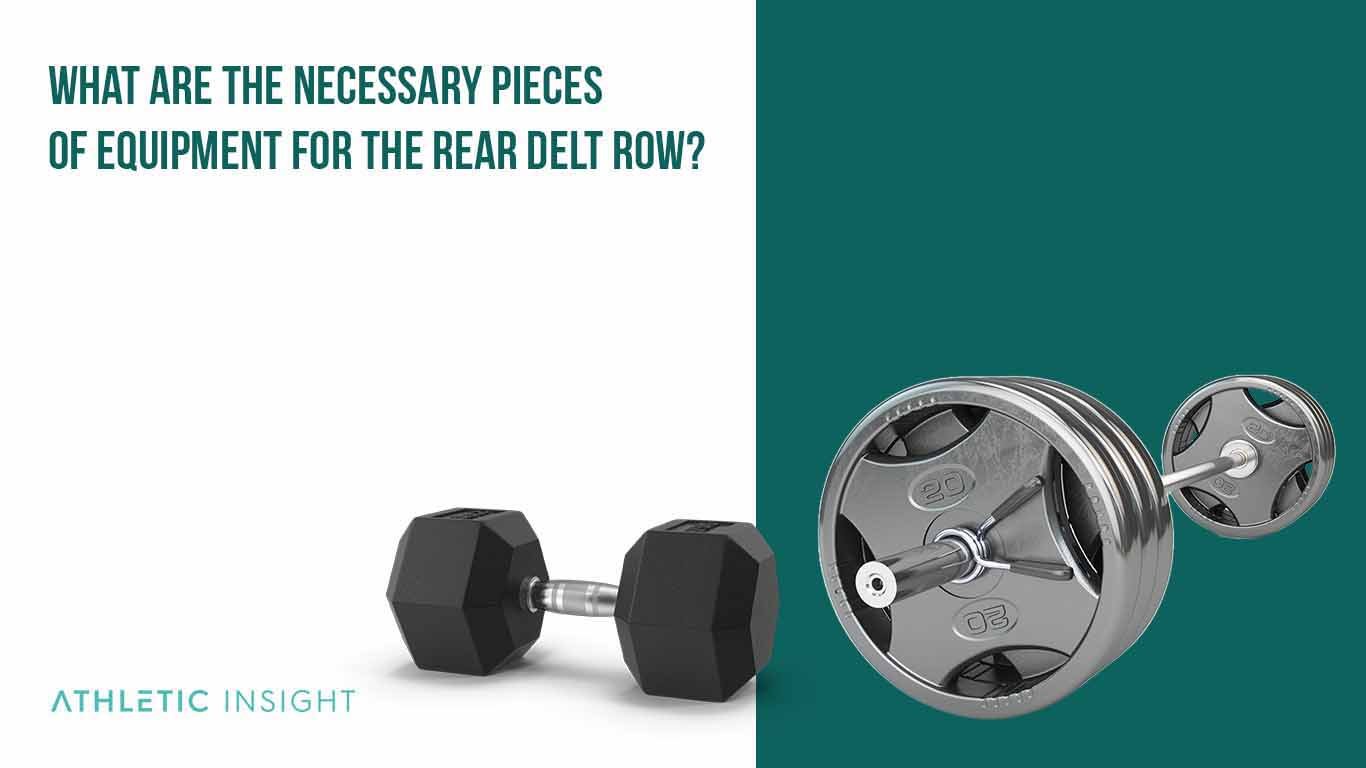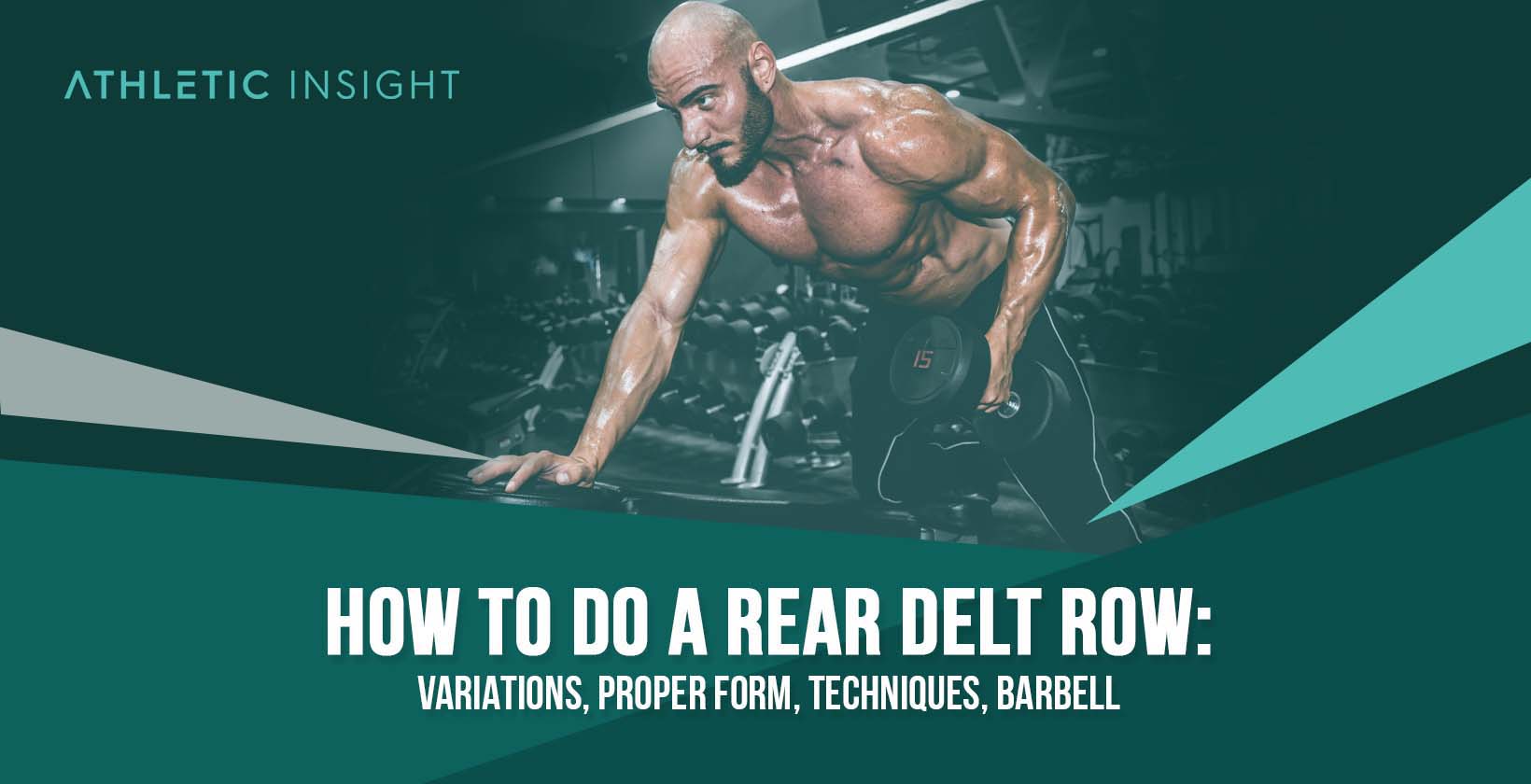The rear delt row is a compound exercise that works the rear deltoids. It is one of several rowing exercises that you should do to build up the muscles in your shoulder, back and midsection.
The main benefit of the rear delt row is to develop the shoulder muscles. More specifically, the rear deltoids. Additionally, the rear delt row exercises the back, biceps, and helps build grip strength.
The rear delt row is performed by grabbing a barbell, or dumbbell, and bending at the waist so that the torso hangs roughly 45 degrees. The knees should be slightly bent, palms facing in towards each other.
Next, the weight is pulled towards the body in a rowing motion. Elbows are bent and out to the sides of the body. The torso should remain stationary, and only your arms should move. Pause when you feel a stretch in the lats and return slowly to the starting position.
Proper form is essential to get the most out of your rear delt row technique. Avoid swinging or jerking the weight to gain momentum because this will put undue stress on the lower back and lead to injury or even pain in the bicep tendons. The importance of proper form will prevent this type of error and lower your chances of making a main rear delt row mistake.
Start with a weight you can handle with proper form for 6-12 reps. The rear delt row types typically are performed in sets of 3 to 4, with 8 to 12 repetitions. There are several main rear delt row types that will be discussed later in this article.
How to Perform Rear Delt Row with Proper Form?
Rear Delt Row is an effective exercise to include in your shoulder workout routine. To dominate the rear delt row, one must be willing to be patient with themselves and use lightweight with proper form to prevent injury and master the movement.
- Hold the barbell slightly wider than shoulder-width apart.
- Place the palms towards you.
- Bend slightly by bending your knees
- Place your chest parallel with the floor.
- Bring the weight up to your chest.
- Pinch your delts at the top.
- Return the weight to its original position.
Proper form prominence of the rear delt row occurs when you feel your core and hamstrings tighten alongside your biceps, back, and deltoids. The function of the rear delt row is to enhance your posture.
What are the Benefits of Rear Delt Row?
The benefits of the rear delt row are endless when it comes to developing the back, biceps, and posterior deltoids.

It is essential to understand the benefits of the rear delt row to know how to implement it into your routine to reap the results long-term. Here are more benefits of the movement.
- Improves posture
- Increases shoulder stability
- Prevents shoulder injuries
- Removes “forward sloping” look
- Improves shoulder mobility
- Reduces injury potential
What are the Mistakes for the Rear Delt Row form?
Most of the rear delt row mistakes that occur from the are form-related. Jerking the weight up and down not only stunts your progress but can cause injuries to the back and biceps.
Whenever you use too much weight (dumbbells or barbells), your rear delt row form will be compromised, which can also result in injury. Here are ways to prevent this.
- Choose a lower weight
- Perform the exercise slowly
- Maintain good rear delt row form
- Pick one or two muscles to focus on
- Keep your core tight
- Don’t raise your hips
How to Determine Proper Weight for Rear Delt Row?
Proper weight determination for the rear delt row is to choose a weight that you can handle with good form for 8-12 reps. The importance of determining the correct weight for the Rear Delt Row is as follows.

- Muscle building
- Prevents injury
- Increases strength
- Improves posture
- Enhances shoulder stability
Using the correct weight and form combined with a proper diet will directly impact your ability to build muscle and strength, lower your chances of sustaining an injury, and enhance shoulder stability and posture.
Which Muscles are Involved while Performing the Rear Delt Row?
The Rear Delt Row mainly involves the back, biceps, and rear deltoids. The rear delt row benefits the back by developing the biceps and posterior deltoids. It assists the rear deltoids by developing the biceps. Together these muscles give you the ability to perform everyday movements, such as picking an object off the floor.
What are the Rear Delt Row Variations?
The rear delt row variations work by increasing or decreasing the number of muscles targeted, the distance the bar is held from your body, and the range of motion.
- Standing Bent-Over With Dumbbells – Targets the upper traps by placing the feet forward.
- Seated Bent-Over With Dumbbells – Targets the lower traps by placing the feet back.
- Seated Bent-Over On An Incline Bench – Targets the upper traps by sitting on an incline bench.
- Standing Bent-Over With One Arm Using A Dumbbell – Targets the upper traps by having one arm use a dumbbell.
- Seated Reversed On A Pec Deck Machine – Targets the lower trap by sitting on a pec deck machine.
- Stand With Two Arms Using Upper Cables – Targets the biceps by using upper cables.
- Stand Bent-Over With One Arm Using A Lower Cable – Targets the lower traps by standing bent over and rowing with one arm using a cable.
What are the Necessary Pieces of Equipment for the Rear Delt Row?
Equipment for a best Rear Delt Row includes a cable machine, a low pulley or cables, dumbbells, and an incline bench. Each form of equipment helps you practice different movement variations to target other muscles.

What is the origin of Rear Delt Row?
The origin of the Rear Delt Row is the Westside Barbell method. This method originated in Columbus, Ohio, by Louie Simmons. The Westside Barbell method is the standard of Olympic powerlifting, which originated in the 1950s and 1960s.
What are the shoulder muscle exercises with Rear Delt Row?
An effective workout program for the shoulder muscles with the rear delt row is the standing reverse fly, seated reverse fly, and seated bent-over delt raise. Start with 3 sets of 6 reps and gradually increase the reps until you get to 12 without sacrificing proper form.
- Standing Reverse Fly
- Seated Reverse Fly
- Seated Bent-Over Delt Raise
This program’s rear delt rows prominence is due to the muscle synergies created by linking scapular and humeral movements.
What are the Rear Delt Row related facts?
Rear delt rows improve posture by strengthening the muscles of your back and lowering the upper body hunch, reducing stress on the back and shoulders. It enhances muscle strength in the back and core, which together work to make your posture better.
Does Rear Delt Row affect the hormones?
The rear delt row positively impacts the hormones by causing an increase in insulin-like growth factor 1, an anabolic growth hormone. It enhances muscle growth which results in larger muscle mass and increased strength.
Does Rear Delt Row Increase Testosterone?
Testosterone is a male steroidal hormone that enhances muscle growth and performance in men. The rear delt row is considered a weight training movement which means it increases the cells that build testosterone, thereby increasing overall testosterone.
Does Rear Delt Row affect the mood?
Performing the rear delt row can impact mood significantly. Studies show that cortisol levels rise to assist in the healing process of the muscles during exercise. This change is a double-edged sword that also causes the release of tension in the muscles and endorphins that increase mood. Therefore, weight training positively impacts mood for up to 48 hours before one will need another boost.
Is Rear Delt Row Practiced within CrossFit?
The rear delt row is practiced in CrossFit as it helps with the row. Lifters need to be able to perform rows with ease in Olympic lifting to perform movements like the power clean.
The athlete must have a solid foundation of pulling strength to lift heavyweight effectively.
Is Rear Delt Row a Military Movement?
The rear delt row is a military movement because it is common for combat soldiers to carry heavy or multiple weapons. Rear Delt Rows are used as a mass builder because they help build muscles like the latissimus dorsi, rear deltoids, and trapezius muscle.
Is Rear Delt Row dangerous?
The rear delt row is dangerous because it can damage the rotator cuff if not done properly.
Is Rear Delt Row essential?
The rear delt row is an essential workout because it helps maintain a balanced musculature. It is essential for those who may be training the upper body as a whole, but have underdeveloped back muscles or shoulder muscles.
Is Rear Delt Row an Olympic lift?
The rear delt row is an Olympic lift because it is an upper-body compound exercise that targets multiple muscles simultaneously.



